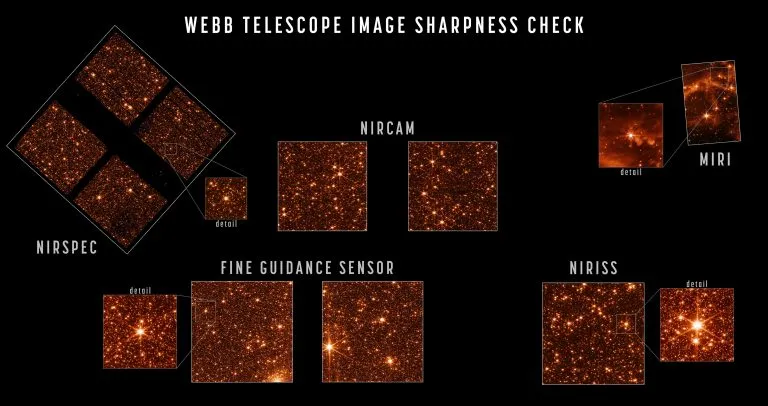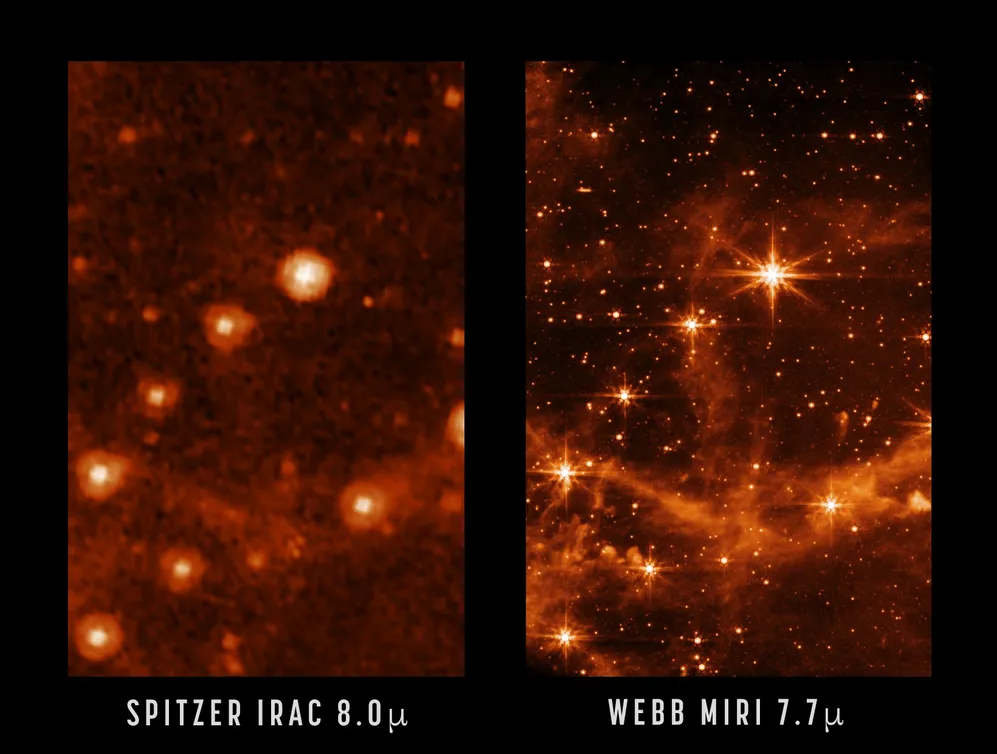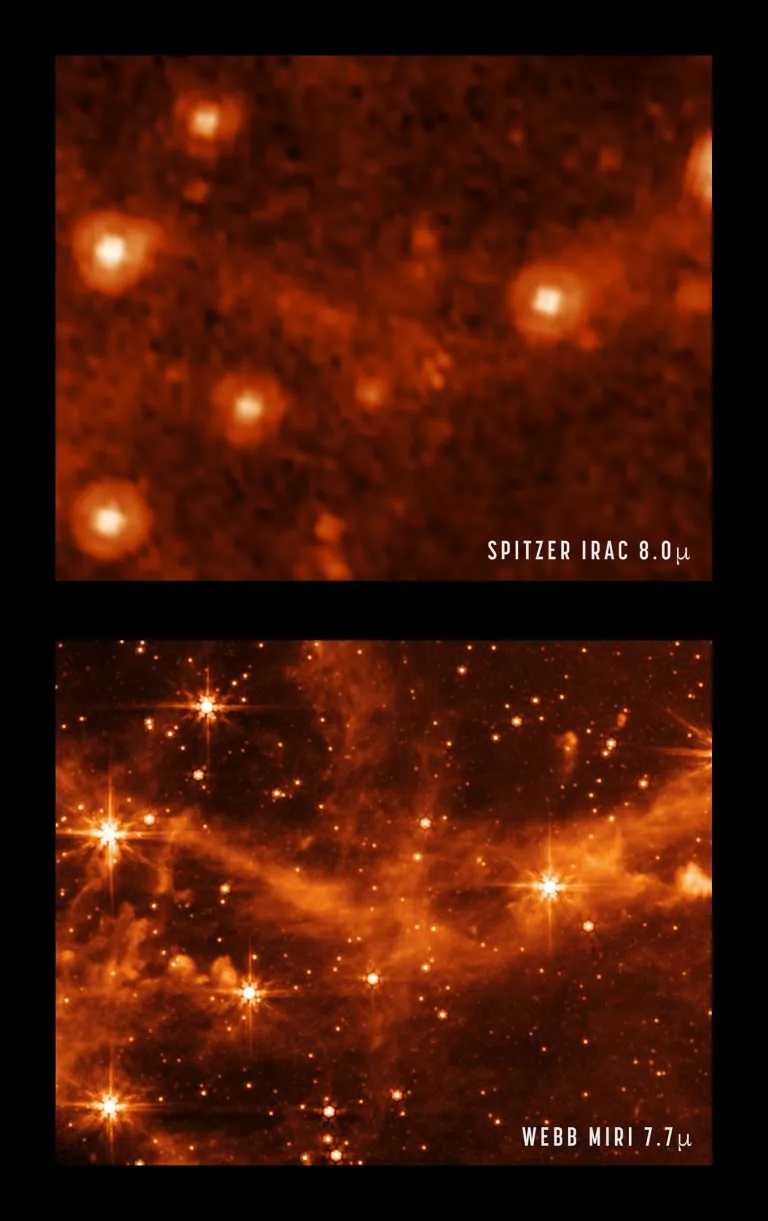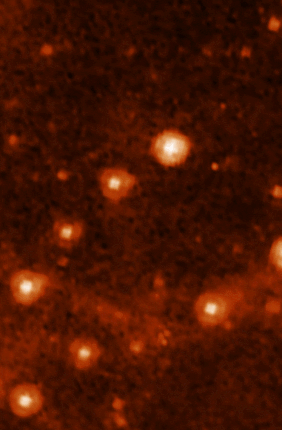NASA's James Webb Space Telescope is aligned in all four of its scientific instruments, as shown in the previous engineering image showing the Observatory's full field of view. Now, NASA scientists focus on the coldest instrument of the Weber telescope: the mid infrared instrument (MIRI)**

Miri's test image (7.7 microns) shows part of the Large Magellanic Galaxy (LMC). The Milky Way's small satellite galaxy, located about 160000 light-years away, provides a dense star domain to test the performance of the Weber telescope.

The scientists compared the close-up lens of the Miri image with the image of the same target (8.0 microns) taken by the infrared array camera of NASA's Spitzer Space Telescope in the past. The retired Spitzer telescope, one of NASA's large observatories, is the first telescope to provide high-resolution images of the near-infrared and mid infrared universe. Weber's main mirror has been significantly enlarged and the detector has been improved, which will enable researchers to see the infrared sky more clearly, so as to achieve more discoveries.

For example, Weber's Miri image shows interstellar gas in unprecedented detail. Here, you can see that the emission of "polycyclic aromatic hydrocarbons" or carbon and hydrogen molecules plays an important role in the heat balance and chemistry of interstellar gas. When Weber is ready to start scientific observation, research with Miri like this will help astronomers have a new understanding of the birth of stars and protoplanetary systems.

Meanwhile, Weber's team has begun setting up and testing Weber's instruments to start scientific observation this summer.
The James Webb Space Telescope is an international cooperative project between NASA, the European Space Agency (ESA) and the Canadian Space Agency (CSA). Miri is part of Europe's contribution to Weber's mission. It is a partnership between Europe and the United States; The main partners are ESA, the Jet Propulsion Laboratory (JPL) and NASA's Goddard Space Flight Center (GSFC).